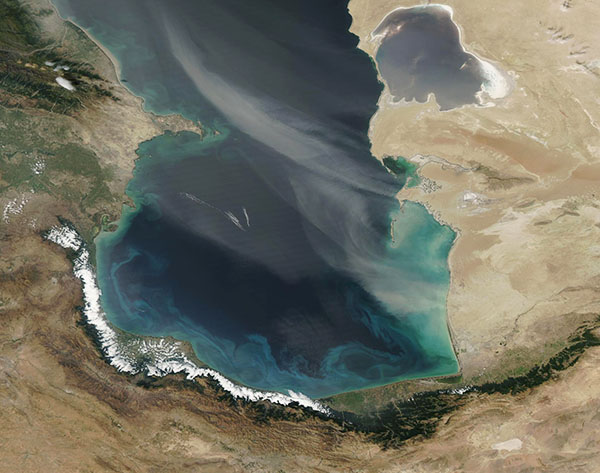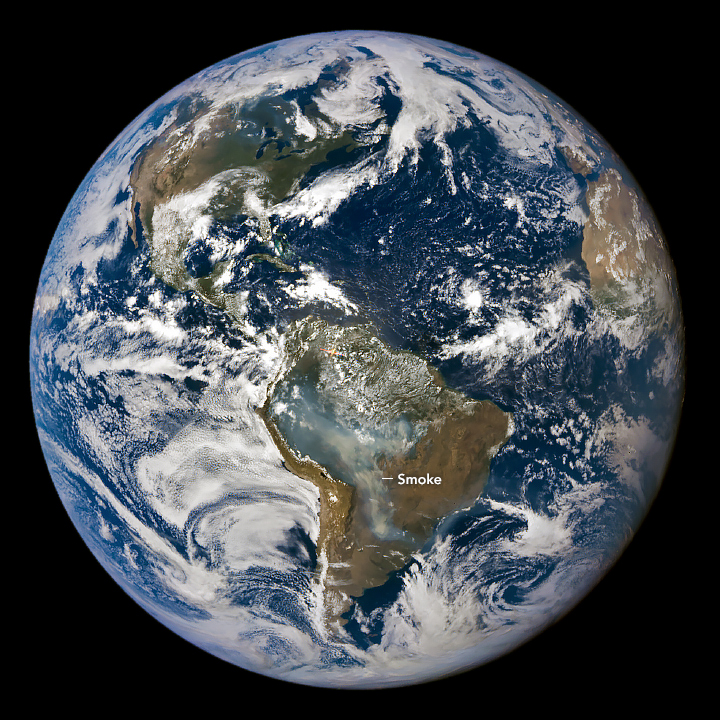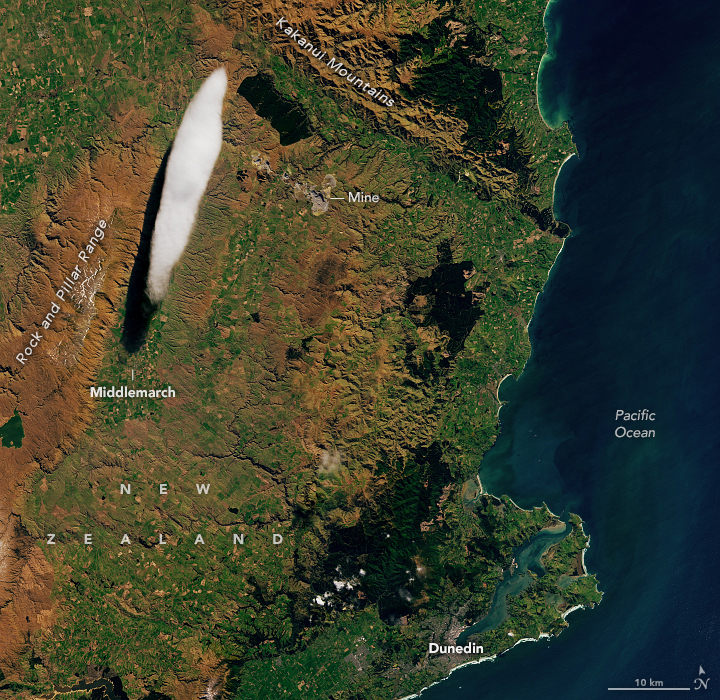Weather history miscellany
Re: Weather history miscellany
https://www.weather.gov/abr/This_Day_in ... ory_Sep_06
1776: Called the Pointe-à-Pitre hurricane, this storm is one of the deadliest Atlantic hurricanes on record.
While the intensity and complete track are unknown, this storm struck Guadeloupe on this day, killing 6,000.
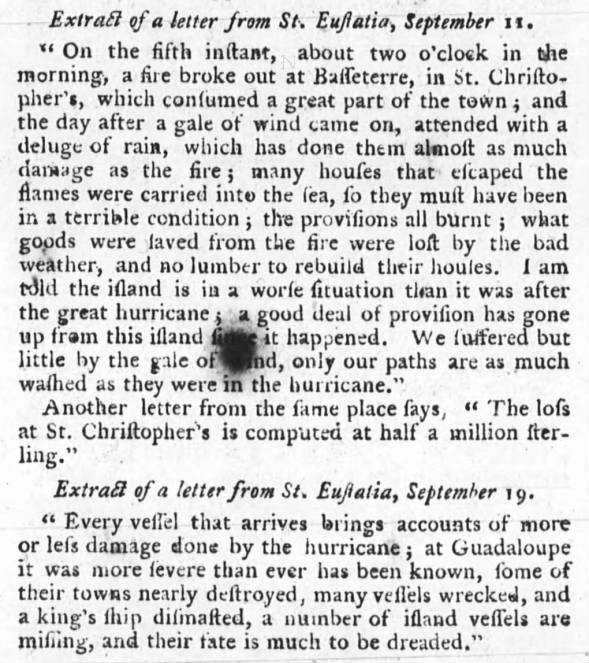
Pointe-à-Pitre Hurricane - Sep 1776 Thu, Oct 10, 1776
The Maryland Gazette (Annapolis, Maryland) · Newspapers.com
https://www.geonames.org/3578598/arrond ... pitre.html
1776: Called the Pointe-à-Pitre hurricane, this storm is one of the deadliest Atlantic hurricanes on record.
While the intensity and complete track are unknown, this storm struck Guadeloupe on this day, killing 6,000.

Pointe-à-Pitre Hurricane - Sep 1776 Thu, Oct 10, 1776
The Maryland Gazette (Annapolis, Maryland) · Newspapers.com
https://www.geonames.org/3578598/arrond ... pitre.html
Re: Weather history miscellany
https://www.weatherforyou.com/weather_history/9-7
1888 - Much of the Middle and Northern Atlantic Coast Region experienced freezing temperatures. Killer frosts resulted in a million dollars damage to crops in Maine. (David Ludlum)
1970 - A lightning bolt struck a group of football players at Gibbs High School in Saint Petersburg FL, killing two persons and injuring 22 others. All the thirty-eight players and four coaches were knocked off their feet. (The Weather Channel)
1988 - Fifty cities across the eastern U.S. reported record low temperatures for the date. The low of 56 degrees at Mobile AL was their coolest reading of record for so early in the season. The mercury dipped to 31 degrees at Athens OH, and to 30 degrees at Thomas WV. (The National Weather Summary)
1888 - Much of the Middle and Northern Atlantic Coast Region experienced freezing temperatures. Killer frosts resulted in a million dollars damage to crops in Maine. (David Ludlum)
1970 - A lightning bolt struck a group of football players at Gibbs High School in Saint Petersburg FL, killing two persons and injuring 22 others. All the thirty-eight players and four coaches were knocked off their feet. (The Weather Channel)
1988 - Fifty cities across the eastern U.S. reported record low temperatures for the date. The low of 56 degrees at Mobile AL was their coolest reading of record for so early in the season. The mercury dipped to 31 degrees at Athens OH, and to 30 degrees at Thomas WV. (The National Weather Summary)
Re: Weather history miscellany
https://www.weather.gov/abr/This_Day_in ... ory_Sep_08
1900: A Category 4 storm made landfall in Galveston, Texas on this day in 1900. This hurricane killed between 6,000 and 12,000 individuals, making it the deadliest US Atlantic hurricane on record. The highest point in the city of Galveston was less than nine feet above sea level. The hurricane brought a storm surge of over 15 feet, which overwhelmed the entire island. Click HERE for more information from the History Channel.

The image about is courtesy of the NWS Office in Houston.

Above is the surface map of Galveston, Texas hurricane.
1900: A Category 4 storm made landfall in Galveston, Texas on this day in 1900. This hurricane killed between 6,000 and 12,000 individuals, making it the deadliest US Atlantic hurricane on record. The highest point in the city of Galveston was less than nine feet above sea level. The hurricane brought a storm surge of over 15 feet, which overwhelmed the entire island. Click HERE for more information from the History Channel.

The image about is courtesy of the NWS Office in Houston.

Above is the surface map of Galveston, Texas hurricane.
Re: Weather history miscellany
https://www.weatherforyou.com/weather_history/9-9
1944 - The ""Great Atlantic Hurricane"" ravaged the east coast. The storm killed 22 persons and caused 63 million dollars damage in the Chesapeake Bay area, then besieged New England killing 390 persons and causing another 100 million dollars damage. (The Weather Channel)
1988 - Florence became a hurricane and headed for the Central Gulf Coast Region. Florence made landfall early the next morning, passing over New Orleans LA. Winds gusts to 80 mph were recorded at an oil rig south of the Chandeleur Islands. Wind gusts around New Orleans reached 61 mph. Total property damage from Florence was estimated at 2.5 million dollars. (Storm Data) (The National Weather Summary)
1944 - The ""Great Atlantic Hurricane"" ravaged the east coast. The storm killed 22 persons and caused 63 million dollars damage in the Chesapeake Bay area, then besieged New England killing 390 persons and causing another 100 million dollars damage. (The Weather Channel)
1988 - Florence became a hurricane and headed for the Central Gulf Coast Region. Florence made landfall early the next morning, passing over New Orleans LA. Winds gusts to 80 mph were recorded at an oil rig south of the Chandeleur Islands. Wind gusts around New Orleans reached 61 mph. Total property damage from Florence was estimated at 2.5 million dollars. (Storm Data) (The National Weather Summary)
Re: Weather history miscellany
https://www.weather.gov/abr/This_Day_in ... ory_Sep_10
1960: The center of Hurricane Donna passed over the middle of the Florida Keys between 2, and 3 am on this day. Donna was a Category 5 hurricane over the Atlantic and a Category 4 at landfall. This storm caused the deaths of over 100 in Puerto Rico, 50 in the United States, and 63 in a jet crash. The plane crash occurred on August 29th as a French airliner was attempting to land at Dakar, Senegal during a “blinding rainstorm.” The storm was likely a tropical disturbance at the time of the crash. Click HERE for more information from the NWS Office in Miami.

Above is a surface map of Hurricane Donna on September 10, 1960, at 1 AM, EST.

Above is the hurricane track across southwest Florida on September 10.
1998: Tropical Storm Frances made landfall near Matagorda Bay, TX, causing the worst coastal flooding and beach erosion since Hurricane Carla in 1961. The storm's heavy rains ended a drought in East Texas but caused severe river flooding in parts of Texas and Louisiana. The highest rainfall total noted was 21.10 inches at Terrytown in southeast Louisiana. A major disaster declaration was issued for Cameron, Jefferson, Lafourche, and Terrebonne parishes in Louisiana.

The rainfall map above is from the Weather Prediction Center.
1960: The center of Hurricane Donna passed over the middle of the Florida Keys between 2, and 3 am on this day. Donna was a Category 5 hurricane over the Atlantic and a Category 4 at landfall. This storm caused the deaths of over 100 in Puerto Rico, 50 in the United States, and 63 in a jet crash. The plane crash occurred on August 29th as a French airliner was attempting to land at Dakar, Senegal during a “blinding rainstorm.” The storm was likely a tropical disturbance at the time of the crash. Click HERE for more information from the NWS Office in Miami.

Above is a surface map of Hurricane Donna on September 10, 1960, at 1 AM, EST.

Above is the hurricane track across southwest Florida on September 10.
1998: Tropical Storm Frances made landfall near Matagorda Bay, TX, causing the worst coastal flooding and beach erosion since Hurricane Carla in 1961. The storm's heavy rains ended a drought in East Texas but caused severe river flooding in parts of Texas and Louisiana. The highest rainfall total noted was 21.10 inches at Terrytown in southeast Louisiana. A major disaster declaration was issued for Cameron, Jefferson, Lafourche, and Terrebonne parishes in Louisiana.

The rainfall map above is from the Weather Prediction Center.
Re: Weather history miscellany
https://www.weather.gov/abr/This_Day_in ... ory_Sep_11
1900: The remnants of the Great Galveston Hurricane were located over central Iowa on this day. Eastern Nebraska, northwest Iowa, and southern Minnesota show four-plus inches of rain from this storm.

The remnants of Hurricane Galveston were located over central Iowa.
1900: The remnants of the Great Galveston Hurricane were located over central Iowa on this day. Eastern Nebraska, northwest Iowa, and southern Minnesota show four-plus inches of rain from this storm.

The remnants of Hurricane Galveston were located over central Iowa.
Re: Weather history miscellany
NASA Earth Observatory
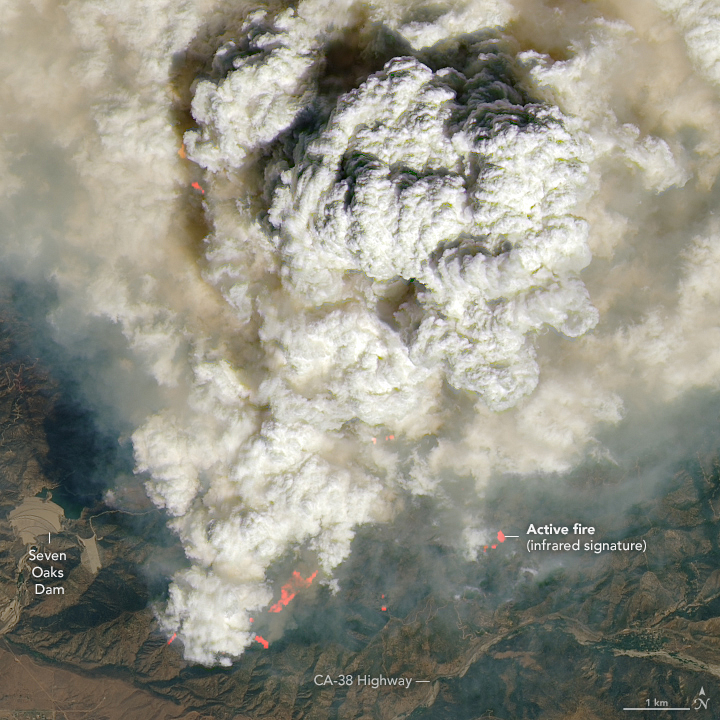
Weather-Making Fire Burns in Southern California(September 9, 2024)
Seven Oaks Dam / Government Canyon

Weather-Making Fire Burns in Southern California(September 9, 2024)
Seven Oaks Dam / Government Canyon
Puffy, white convective clouds popped up in the hills around Los Angeles, Riverside, San Bernardino, and San Diego throughout the afternoon of September 9, 2024. Three of them were different than the others, with their convection fueled, in part, by surface heat associated with intense wildland fires.
Known among meteorologists as pyrocumulus or flammagenitus—or sometimes just “fire clouds”—these tall, billowing features typically have a column of smoke at their base and powerful updrafts that channel large amounts of smoke high into the atmosphere. As the convective plume rises, water vapor condenses around small particles to form cloud droplets and eventually visible clouds at the top of the smoke plume.
Re: Weather history miscellany
https://www.weatherforyou.com/weather_history/9-12
1882 - Hot and dry winds caused tree foliage in eastern Kansas to wither and crumble. (David Ludlum)
1988 - An afternoon tornado spawned a tornado which skipped across northern sections of Indianapolis IN damaging roofs and automobiles. It was the first tornado in central Indiana in September in nearly forty years of records. Hurricane Gilbert plowed across the island of Jamaica, and by the end of the day was headed for the Cayman Islands, packing winds of 125 mph. (The National Weather Summary) (Storm Data)
1882 - Hot and dry winds caused tree foliage in eastern Kansas to wither and crumble. (David Ludlum)
1988 - An afternoon tornado spawned a tornado which skipped across northern sections of Indianapolis IN damaging roofs and automobiles. It was the first tornado in central Indiana in September in nearly forty years of records. Hurricane Gilbert plowed across the island of Jamaica, and by the end of the day was headed for the Cayman Islands, packing winds of 125 mph. (The National Weather Summary) (Storm Data)
Re: Weather history miscellany
MODIS Image of the day
Greening in the Sahara Desert
https://www.geonames.org/2443354/idoukal-n-taghes.html

September 6, 2023 |

September 8, 2024 |
Greening in the Sahara Desert
https://www.geonames.org/2443354/idoukal-n-taghes.html
Re: Weather history miscellany
https://www.weatherforyou.com/weather_history/9-13
1922 - The temperature at El Azizia in Libyia soared to 136 degrees to establish a world record. To make matters worse, a severe ghibi (dust storm) was in progress. (The Weather Channel)
1928 - Hurricane San Felipe crossed Puerto Rico resulting in the highest winds, the heaviest rains, and the greatest destruction in years. The hurricane produced much damage in the Virgin Islands, and later hit the Bahamas and Florida. (David Ludlum)
1984 - Hurricane Diana, after making a complete loop off the Carolina coast, made landfall and moved across eastern North Carolina. Diana deluged Cape Fear with more than eighteen inches of rain, and caused 78 million dollars damage in North Carolina. (Storm Data)
1988 - Hurricane Gilbert smashed into the Cayman Islands, and as it headed for the Yucatan peninsula of Mexico strengthened into a monster hurricane, packing winds of 175 mph. The barometric pressure at the center of Gilbert reached 26.13 inches (888 mb), an all-time record for any hurricane in the Caribbean, Gulf of Mexico, or the Atlantic Ocean. Gilbert covered much of the Gulf of Mexico, producing rain as far away as the Florida Keys. (The National Weather Summary) (Storm Data)
1922 - The temperature at El Azizia in Libyia soared to 136 degrees to establish a world record. To make matters worse, a severe ghibi (dust storm) was in progress. (The Weather Channel)
1928 - Hurricane San Felipe crossed Puerto Rico resulting in the highest winds, the heaviest rains, and the greatest destruction in years. The hurricane produced much damage in the Virgin Islands, and later hit the Bahamas and Florida. (David Ludlum)
1984 - Hurricane Diana, after making a complete loop off the Carolina coast, made landfall and moved across eastern North Carolina. Diana deluged Cape Fear with more than eighteen inches of rain, and caused 78 million dollars damage in North Carolina. (Storm Data)
1988 - Hurricane Gilbert smashed into the Cayman Islands, and as it headed for the Yucatan peninsula of Mexico strengthened into a monster hurricane, packing winds of 175 mph. The barometric pressure at the center of Gilbert reached 26.13 inches (888 mb), an all-time record for any hurricane in the Caribbean, Gulf of Mexico, or the Atlantic Ocean. Gilbert covered much of the Gulf of Mexico, producing rain as far away as the Florida Keys. (The National Weather Summary) (Storm Data)
Re: Weather history miscellany
https://www.weatherforyou.com/weather_history/9-14
1944 - A very destructive hurricane swept across Cape Hatteras and Chesapeake Bay, side swiped New Jersey and Long Island, and crossed southeastern Massachusetts. The hurricane killed more than four hundred persons, mainly at sea. The hurricane destroyed the Atlantic City NJ boardwalk. (David Ludlum) (The Weather Channel)
1970 - The temperature at Fremont, OR, dipped to 2 above zero to equal the state record for September set on the 24th in 1926. (The Weather Channel)
1988 - Hurricane Gilbert made the first of its two landfalls on Mexico, producing 170 mph winds at Cozumel. (The Weather Channel)
1988 - Thunderstorms produced severe weather over the Texas panhandle during the evening hours. One thunderstorm spawned a strong (F-2) tornado in the southwest part of Amarillo, and deluged the area with five inches of rain. The heavy rain left roads under as much as five feet of water, and left Lawrence Lake a mile out of its banks. Hurricane Gilbert lost some of its punch crossing the Yucatan Peninsula of Mexico. Its maximum winds diminished to 120 mph. (The National Weather Summary) (Storm Data)
1944 - A very destructive hurricane swept across Cape Hatteras and Chesapeake Bay, side swiped New Jersey and Long Island, and crossed southeastern Massachusetts. The hurricane killed more than four hundred persons, mainly at sea. The hurricane destroyed the Atlantic City NJ boardwalk. (David Ludlum) (The Weather Channel)
1970 - The temperature at Fremont, OR, dipped to 2 above zero to equal the state record for September set on the 24th in 1926. (The Weather Channel)
1988 - Hurricane Gilbert made the first of its two landfalls on Mexico, producing 170 mph winds at Cozumel. (The Weather Channel)
1988 - Thunderstorms produced severe weather over the Texas panhandle during the evening hours. One thunderstorm spawned a strong (F-2) tornado in the southwest part of Amarillo, and deluged the area with five inches of rain. The heavy rain left roads under as much as five feet of water, and left Lawrence Lake a mile out of its banks. Hurricane Gilbert lost some of its punch crossing the Yucatan Peninsula of Mexico. Its maximum winds diminished to 120 mph. (The National Weather Summary) (Storm Data)
Re: Weather history miscellany
NASA Earth Observatory
A Deluge for the Sahara
https://www.geonames.org/12952593/abadla.html
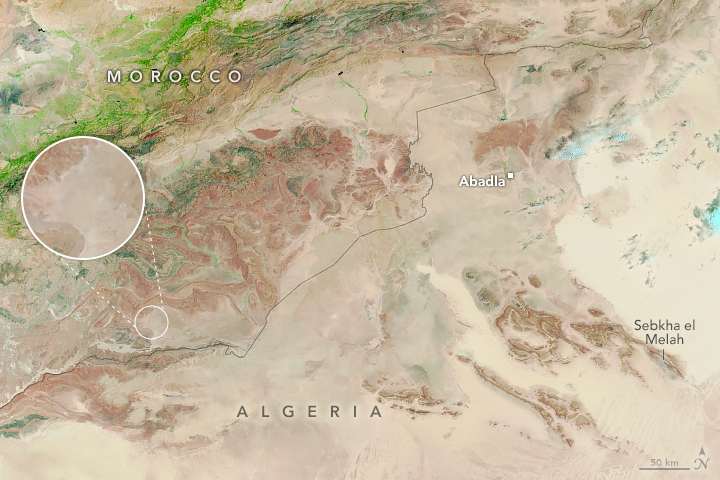 August 14, 2024 |
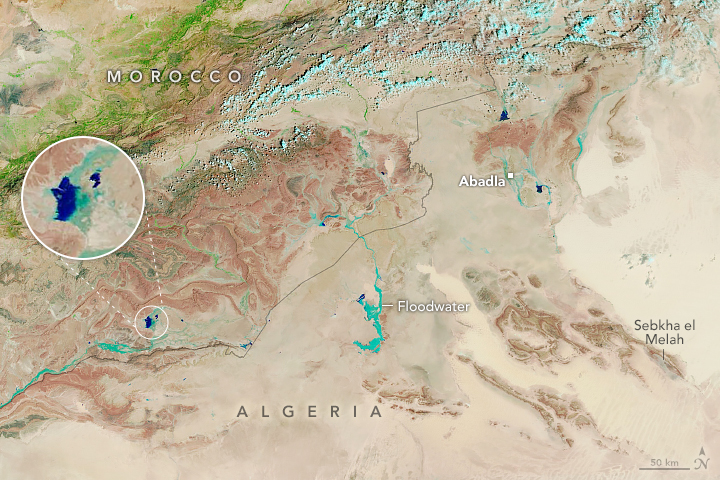 September 10, 2024 |
https://www.geonames.org/12952593/abadla.html
Re: Weather history miscellany
https://www.weather.gov/abr/This_Day_in ... ory_Sep_15
2010: The largest hailstone in Kansas was found in southwest Wichita.
It measured 7.75 inches in diameter.
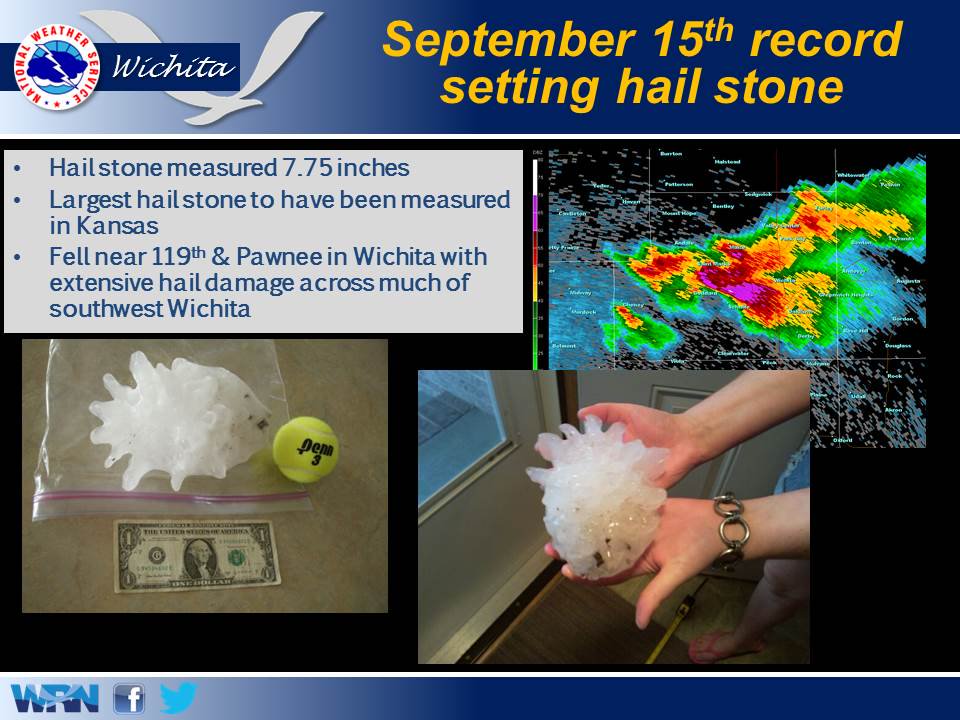
The image above is from a tweet by the NWS Office in Wichita, Kansas.
2010: The largest hailstone in Kansas was found in southwest Wichita.
It measured 7.75 inches in diameter.

The image above is from a tweet by the NWS Office in Wichita, Kansas.
